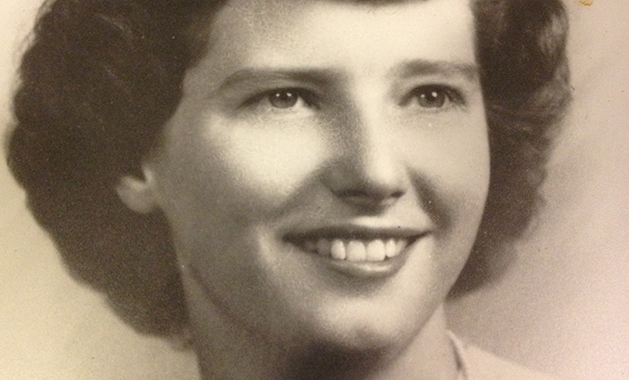
Sally Mainquist turned grief into action, loss into motivation. Her mother, JoAnn Sullivan, died in 2009, about 13 years after she was diagnosed with colon cancer. Cancer didn’t take Sullivan’s life—complications from Alzheimer’s disease did.
“It took me a long time to talk about it because I got teary-eyed,” Mainquist says. After hearing Mark Chronister, board president of the Alzheimer’s Association Minnesota and North Dakota Chapter, speak about the board’s mission, Mainquist made a decision. “I decided it was time to put on my big-girl pants and do something about it.” She now serves on the chapter’s board.
In the U.S., over 5 million Americans are living with Alzheimer’s, and as many as 16 million will have the disease in 2050, according to the Alzheimer’s Association. “We all have a brain, so we’re all at risk for getting Alzheimer’s disease,” says Sue Spalding, the chapter’s executive director and the regional leader for Minnesota, Iowa, Nebraska, North and South Dakota, and Wisconsin.
The association estimates that the cost of caring for those with Alzheimer’s and other dementias will be $1.1 trillion by mid-century, and it notes that almost one in every three senior citizens who dies each year has Alzheimer’s or another form of dementia. “This is such a public health crisis,” Spalding says, adding that securing treatment and prevention of the disease “will change the world.”
Mainquist participates on the board’s Increasing Concern and Awareness committee. “The goal is to find a cure, to find the first survivor,” she says. In order to find a cure, it takes research dollars, and raising those funds requires awareness—lots of it. “We really need to get the funding behind [Alzheimer’s] to find a cure,” Mainquist says.
Since Spalding began working with the Alzheimer’s chapter more than four years ago, she’s witnessed an uptick in awareness, fundraising and research. “I have so much hope,” she says. “There are a lot of people working on the disease, and they are [making discoveries] every day.”
While there have been strides in educating the public, Spalding says there are some lingering misconceptions. Alzheimer’s isn’t just an “old person’s disease.” According to the Alzheimer’s Association, about 4 percent of the more than 5 million Americans with Alzheimer’s have early-onset (under the age of 65); many are in their 40s and 50s.
Spalding also says that there is some misunderstanding that Alzheimer’s is a mental health issue, but those with Alzheimer’s experience physical changes to their brains. Those physical alterations to the brain don’t necessarily manifest as outward changes until later, so Alzheimer’s patients often don’t “look sick.” Spalding also notes that dementia is an overarching term. There are at least 50 different types of dementia, Alzheimer’s being one of them.
June 21 is deemed “the longest day,” a time set aside to raise awareness and funds for Alzheimer’s research by encouraging those touched by the disease to spend time in activities and raising money in honor of their loved ones affected by Alzheimer’s.
In addition to the June event, Walks to End Alzheimer’s take place throughout the nation, and Minnesota hosts the third-largest event in the country. Part of the event includes a parade of flowers carried by attendees. Each flower’s color has meaning—blue (I have Alzheimer’s), purple (I have lost someone to the disease), yellow (I support or care for someone with Alzheimer’s) and orange (I support the cause). The color white hasn’t been used yet—it’s for survivors. “Hopefully, in my lifetime, I can see that white flower,” Mainquist says.
How You Can Help
The 2017 Walk to End Alzheimer’s is set for Sept. 9 at Target Field. 1 Twins Way, Mpls. Additional information is available by contacting Terri Waddell at 952.830.0512 or by visiting the website here.
The Alzheimer’s disease helpline is available 24/7 at 800.272.3900.









